#cdl training requirements
Explore tagged Tumblr posts
Text
CDL legislation eases career path for commercial drivers
I would be curious to know how many hours were previously required for the CDL students. What educational requirements have they removed? Hopefully nothing that has to do with safety. But there is a proven connection between how educated an individual is in their current field to how successful those individuals are at their jobs.
I report 2-4 safety recalls a day on my blog. I read about planes falling apart in the sky. Have we forgotten that we can't have quality operations that are safe without proper training and quality standards?
I would love to hear your thoughts!
#cdl training#cdl license training#tim walz#cdl training requirements#road safety#highway#highway safety#safety regulations#Michigan
0 notes
Text

At Punjab Truck Driving School, we help you meet the California CDL requirements with our comprehensive Class A CDL training. Our expert instructors ensure you receive the Best CDL training, preparing you to pass exams and succeed in your trucking career with confidence and ease.
0 notes
Text
Kickstart Your Trucking Business: Financial Relief and Support Solutions
Renee Williams, PresidentFreightRevCon, a Freight Revenue Consultants, LLC. company The average cost to start a new trucking company ranges from $10,000 to $30,000, not including the cost of purchasing trucks and trailers. Here is a breakdown of the typical startup costs: Semi-truck and trailer down payment: $18,000 Insurance down payment: $4,000 USDOT number registration: $300 Business…

View On WordPress
#A/R automation for trucking#annual insurance premiums#business entity filing#CDL training cost#ELD monthly fees#electronic logging device cost#Freight#freight industry#Freight Revenue Consultants#heavy vehicle use tax#IRP plates cost#new trucking business setup#semi-truck down payment#start a trucking company#starting a freight company#trailer purchase cost#Transportation#truck factoring companies#truck financing#truck purchase cost#Trucking#trucking business startup costs#trucking capital requirements#trucking company expenses#trucking company line of credit#trucking equipment costs#trucking industry#trucking insurance costs#unified carrier registration cost#USDOT number registration
0 notes
Text
guys i know you don't want to hear this but "skilled" and "unskilled" labor doesn't refer to how valuable it is or how hard it is to do. it just means whether it requires advance training. a truck driver needs a commercial driver's license (CDL) and thus it is skilled labor. meanwhile managers at a retailer are not considered skilled labor. wildland firefighters are not considered skilled labor. meanwhile, hairstylists in all 50 states are required to have a license; it's skilled labor. it's not arbitrary, it just doesn't refer to the thing you think it does
59 notes
·
View notes
Text












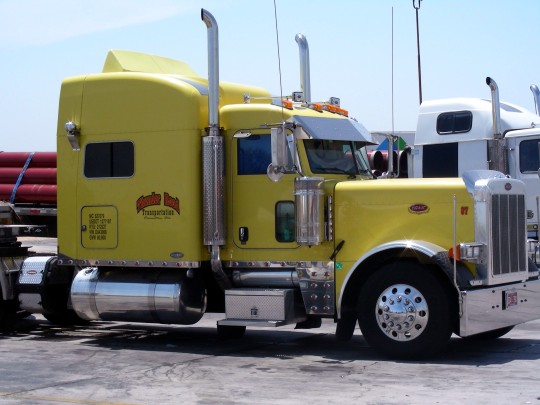

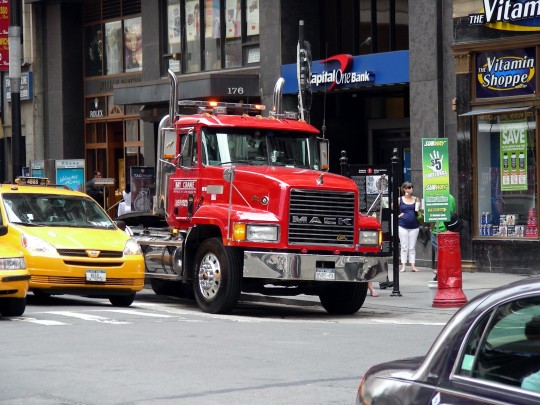

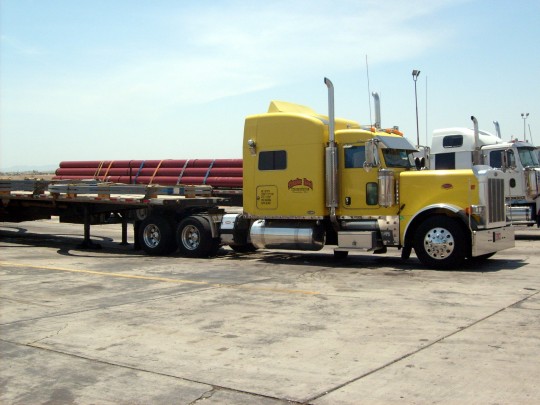

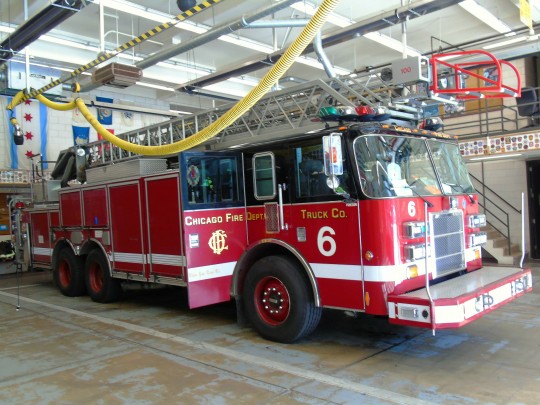
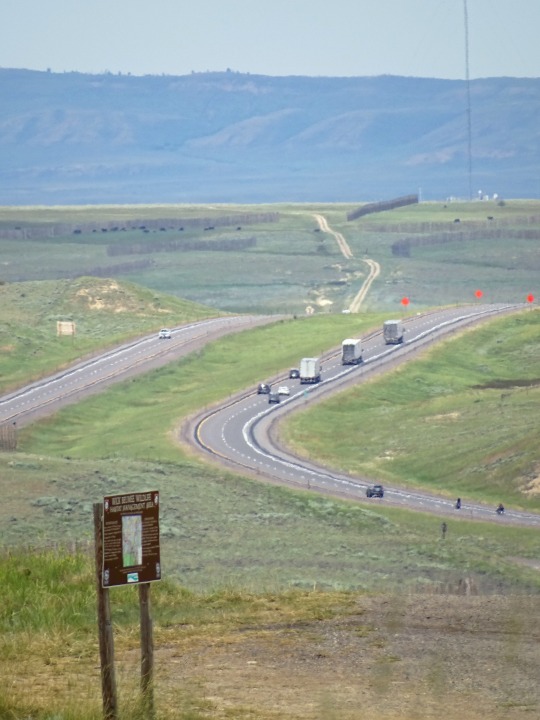
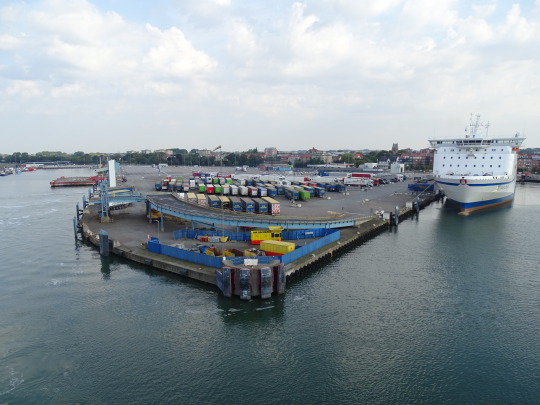
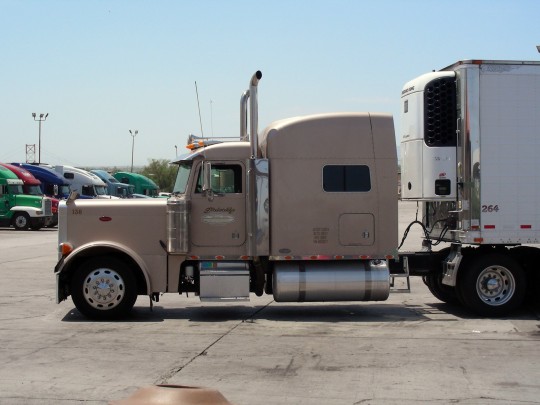


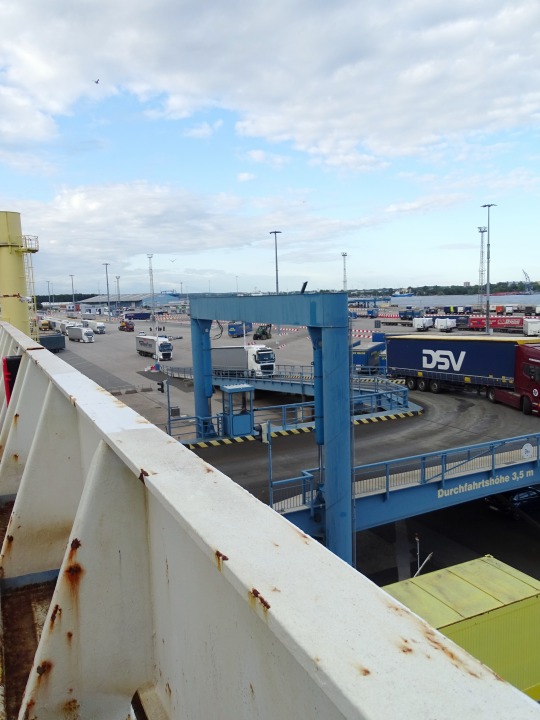




Truck Driver Day
Professional truck drivers are honored and celebrated today with Truck Driver Day. In the United States, a driver is considered to be a truck driver when their vehicle has a gross vehicle weight—the weight of the vehicle loaded—of at least 26,000 pounds. They must obtain a commercial driver's license (CDL) to drive a vehicle of this weight. Employers often require their drivers to take a safety training program, and some also require a high school degree or GED.
Truck drivers carry all kinds of freight—livestock, food, canned goods, liquids, packages, and vehicles—all across the United States and the world. They often have to load and unload their freight and must inspect their trucks before taking to the road. Truck drivers often ship products to stores, and some may have to undertake sales duties. Many truck drivers work long hours. Some may have daily local routes that keep them close to home, while others may have routes and schedules that often change, and many have to be away from home for an extended amount of time.
Some trucks were on the road in the United States prior to World War I. Trucks continued to be used and developed during the war, and by 1920 there were more than a million trucks on the roads of America. Trucking continued to expand over the following decade, on account of advancements such as the introduction of the diesel engine, improved rural roads, the introduction of power brakes and steering, and the standardization of truck and trailer sizes. In the 1930s, a number of trucking regulations were implemented, and the American Trucking Association was created. Trucking activity increased in the 1950s and '60s, in large part because of the creation of the Interstate Highway System. Regulations on the weight of trucks continued to be updated.
The heyday of the truck driver came in the 1960s and '70s. At the time, a wide swath of the public viewed truck drivers as modern-day cowboys or outlaws. The rise of "trucker culture" was signaled with the proliferation of trucker songs and films, the wearing of plaid shirts and trucker hats by the public, and the wide use of CB radios and CB slang. The romanticization of trucker culture subsided by the dawn of the 1980s.
Many truckers went on strike during the energy crises of 1973 and 1979, after the cost of fuel rose. The Motor Carrier Act of 1980 partially deregulated the industry. As a result, many new trucking companies were started. Trucker union membership also drastically declined, leading to lower pay. But the deregulation did reduce consumer costs, and it increased production and competition in the trucking industry. By the twenty-first century, trucking dominated the freight industry. In 2006, there were 26 million trucks on America's roads, which hauled about 70 percent of the country's freight. Truckers continue to play a prominent role in keeping the wheels of the economy turning, and for the hard work they put in to make this happen, they are honored and celebrated today!
How to Observe Truck Driver Day
Some ideas of ways the day could be spent include:
If you are a truck driver, get out there and drive! Or, take the day off. It should be up to you!
Wave to truckers or make a gesture like you are pulling a truck horn in an attempt to get them to honk their horns.
Thank a truck driver. Tell them thanks in person or make a social media post of thanks. Include the hashtag #TruckDriverDay.
Become a truck driver.
Listen to some truck driving songs such as "Convoy" and "Truck Drivin' Man."
Watch some truck driving films such as Smokey and the Bandit, Convoy, and Big Rig.
Talk on a CB radio.
Eat at a truck stop.
Attend or take part in the National Truck Driving Championships, which are held around the time as Truck Driver Day.
Read a book about trucking or truckers such as Trucking Country: The road to America's Wal-Mart Economy or The Long Haul: A Trucker's Tales of Life on the Road.
Explore the websites of organizations and companies related to the industry such as American Trucker, Truckers News, the Federal Motor Carrier Safety Administration, the American Trucking Associations, and the Women in Trucking Association.
#Hafen Rostock#MS Tom Swayer#Trelleborg Harbor#Alaska Highway#Yukon#British Columbia#Canada#Sweden#Germany#summer 2023#Truck Driver Day#TruckDriverDay#12 August#car#truck#streetscene#USA#original photography#I really love the first pic#Nevada#Manhattan#New York City#Sherman Summit#fire truck#Chicago#San Francisco#Echo Canyon#Utah#Wyoming#California
8 notes
·
View notes
Text
CDL Safety Management Plans
The Federal Motor Carrier Safety Administration (FMCSA) requires commercial motor carriers to have a safety management plan (SMP) in place as part of their compliance with regulation 385.17. It is a comprehensive document that outlines a company's policies and procedures for ensuring the safety of their operations. In this blog piece, we will discuss the key components of an SMP and why it is essential for FMCSA compliance.
One of the critical elements of an SMP is a driver qualification program. This program ensures that drivers are qualified and trained to operate commercial motor vehicles safely. It includes measures such as verifying a driver's experience, driving record, and medical qualifications before allowing them to drive. The program also includes regular driver training and re-evaluation to ensure that they remain qualified and up to date with any changes to regulations.
Another essential component of an SMP is a vehicle maintenance program. This program ensures that commercial motor vehicles are properly maintained and inspected to prevent breakdowns and accidents. It includes regular inspections, repairs, and maintenance procedures that are documented and readily accessible. It also includes procedures for identifying and addressing any safety-related issues that may arise.
It should also include a driver safety program, which outlines the company's policies and procedures for ensuring driver safety. This program includes measures such as monitoring driver behavior, addressing any safety-related concerns promptly, and providing driver training on safety-related topics.
In addition to these key components, an SMP should include a crisis management plan. This plan outlines the steps that a company will take in the event of an accident, emergency, or other crisis. It includes procedures for notifying authorities, securing the scene, aiding those involved, and addressing any media inquiries.
In summary, an SMP is a critical component of FMCSA compliance for commercial motor carriers. It includes driver qualification and safety programs, vehicle maintenance procedures, and a crisis management plan. By implementing a comprehensive SMP, companies can ensure the safety of their operations and avoid potential fines and penalties for non-compliance with regulation 385.17.
Blog Source: https://sites.google.com/view/cdlsafetymanagementplans/home
4 notes
·
View notes
Text
My First Experience on the road
It was a beautiful spring in 2014 I was freshly dumb 21-year-old that thought i knew everything and couldn't listen to no one. I was struggling to raise my oldest boy who is also my stepson, and struggling to hold onto a job in the welding field as I couldn't listen to anyone long enough to keep a job to learn the field and move up in the industry. So, after long talks to my now wife then girlfriend I decided it would be best to enter CDL school and begin my career as an OTR driver.
I began the journey that took three weeks received my license on time and signed onto a truck carrier hauling a flatbed OTR, after i signed i had to report in late April or early May to begin training in Oklahoma that would last two weeks and then spend six weeks on the road with a trainer that I unwillingly wanted to do but had to as a requirement. So, I got down to Oklahoma checked in nicely and that was when it sunk in that I wasn't grown as I thought this was my first experience away from everyone that I loved and across the country for a long period of time. As that pressure mounted everything seemingly went accordingly int the first week of the hiring process and process to become what I always dreamed of a truck driver.
So it began, I passed everything I needed to in the first segment of training the securement road tests, being professional while on their grounds. Now it was time to test my ability to become a driver of the free road and also see if I could live with another person in a 72-inch bunk for the next six weeks. It was a Thursday or Friday the trucks rolled in drivers hanging out in the lounge our training manager took us across the lawn to the drivers lounge where we would be paired with our trainer, I remember the look and old man that looked to be older than my parents and someone who has been doing this a long time, I shook his hand introduced myself he showed me to the truck and we began talks on what he expected for the trip. Everything seemed to be alright we weren't leaving till the next morning, so we got dinner and hung out with the rest of the drivers at the lounge. The next morning, we headed out to begin the process, it was alright he drove, but he would not shut up he must have talked for what seemed like an eternity. We headed out from Oklahoma to Virginia on our first load made it there next morning and that's when it started, he was a loud talker and seemingly always sounded like he was yelling at you. That startled me and rattled my confidence in me, and from there it was all downhill and got worse and worse from the second night. Now he trained as a team so he would drive and then I would drive, and we were hitting decent numbers for two people driving a day and by mid-week I was exhausted this was way worse than the welding factories I had worked in and by the end of the week I broke.
It was a beautiful day in South Carolina, we were in the middle of nowhere and I had slept horrible broken and without any confidence left in me I told the trainer I wasn't going to drive that day because I was too tired, and in the trucking world that's like telling your boss you aren’t working today for some bullshit reason. He looked shrugged it off said Well you're driving in the mountains all day tomorrow. Okay big deal I thought, little did I know it would be. We sat there and waited to get loaded which at this time I was burnt, few hours go by we get loaded and that's when my career seemingly spiraled to its end. I was helping securing the load and beginning the tarping phase of the load he was on the catwalk pulling his tarps out and he threw me a tarp waiting for him to give directions he said what are you retarded start tarping. Exhausted and felt like out of options i threw the tarp down and walked away to cool down as I was a hot head at any moment could pop. I walked and after he got the load road ready, we got in the truck silently and began our journey to Chicagoland. We were pretty quiet that ride into the stop at Knoxville where it all ended for me. Talking on the phone with my girlfriend my stepson who was only two at the time said to me when are you coming home and that hit me, we were best friends and I felt like I abandoned him. I told her to get me tomorrow as we were going to be going through Indy and stopping somewhere north of there headed up to Chicagoland. And for me that was my first experience I quit the next morning and was so discouraged from driving that I didn't get back into a rig for about 6 years until i was in my mid to late 20′s
2 notes
·
View notes
Text
Commonly Overlooked Deductions For Truck Drivers
When it comes to trucking tax preparation, truck drivers often face unique challenges and opportunities. Many are aware of standard deductions, such as fuel and maintenance costs, but several commonly overlooked deductions can significantly impact tax returns. Understanding these deductions can lead to substantial savings for truck drivers, whether they are owner-operators or employees.
Here are some commonly overlooked deductions to consider:
Per Diem Allowances
Truck drivers frequently spend extended periods on the road, leading to additional meal and lodging expenses. The IRS allows drivers to deduct a per diem for meals while traveling for business. Instead of keeping every meal receipt, drivers can opt for the per diem rates, which vary based on location. In 2024, the federal per diem rate is set at $69 for meals and incidentals. This deduction can simplify the process and often results in a higher deduction compared to actual meal expenses.
Vehicle Depreciation
For owner-operators, the depreciation of their trucks is a significant deduction that is often overlooked. Truck drivers can deduct a portion of the truck’s cost each year based on its useful life. There are two methods to consider: the standard depreciation method and Section 179 expensing, which allows drivers to deduct the full purchase price of qualifying equipment, up to a limit, in the first year. Understanding the best method for your situation can maximize savings.
Interest on Vehicle Loans
If a truck driver has financed their vehicle, the interest paid on the loan can also be deducted. This deduction can add up over the years, especially for owner-operators with high loan balances. It’s crucial to keep track of interest payments throughout the year to ensure this deduction is claimed.
Travel Expenses
Beyond meals and lodging, other travel-related expenses can be deducted. This includes costs associated with truck parking, tolls, and even the expense of a hotel if required. Maintaining thorough records of all travel-related expenses ensures drivers don’t miss out on these valuable deductions.
Personal Protective Equipment (PPE)
Safety is paramount in the trucking industry, and expenses related to personal protective equipment are deductible. This includes items like safety boots, gloves, hard hats, and high-visibility clothing. As these items are necessary for work, they qualify as legitimate business expenses.
Licensing and Training Fees
Truck drivers are required to maintain specific licenses and undergo training to stay compliant with regulations. The costs associated with renewing commercial driver’s licenses (CDLs), obtaining endorsements, and completing mandatory training courses can be deducted. These expenses are directly tied to maintaining employment and should not be overlooked.
Cell Phone and Communication Expenses
In today’s digital world, effective communication is essential. Truck drivers can deduct expenses related to their cell phones and internet service if used for business purposes. Keeping a detailed log of business-related calls and data usage can help justify these deductions.
Tax Preparation Fees
The costs incurred for tax preparation services are deductible as well. Whether hiring a tax professional or using tax software, these expenses can reduce taxable income and should be included in the deductions claimed.
Health Insurance Premiums
For owner-operators, health insurance premiums can be a significant expense. Fortunately, sWhen it comes to trucking tax preparation, truck drivers often face unique challenges and opportunities. Many are aware of standard deductions, such as fuel and maintenance costs, but several commonly overlooked deductions can significantly impact tax returns.
Conclusion
Truck drivers have a unique set of expenses, and understanding commonly overlooked deductions can lead to significant tax savings. Keeping detailed records, maintaining receipts, and working with a tax professional knowledgeable about trucking industry specifics can help ensure that all eligible deductions are claimed. By taking advantage of these often-missed deductions, truck drivers can maximize their tax returns and enhance their overall financial health.
0 notes
Text

Regulations and Guidelines Imposed on Reliable Auto Transport Services Beyond California
Understanding the regulations and guidelines that govern the auto transport industry is essential when choosing a reliable auto transport service. These rules ensure that every car is transported safely and efficiently while protecting the interests of both companies and customers. Explore the key regulations influencing auto transport services, including safety standards, insurance requirements, and licensing.
Federal Motor Carrier Safety Administration (FMCSA)
While the CPUC governs auto transport services within California specifically, the Federal Motor Carrier Safety Administration (FMCSA) oversees regulations for interstate auto transportation throughout the United States. The FMCSA sets forth rules regarding licensing, insurance requirements, driver qualifications, vehicle maintenance standards, hours of service limitations for drivers, and more.
Unified Carrier Registration (UCR)
Auto transport companies operating across state lines are required to register with the Unified Carrier Registration (UCR) system. This registration ensures compliance with federal regulations and helps maintain a level of accountability within the industry. The UCR program collects fees from carriers based on the number of vehicles they operate, which is then used for enforcement activities and safety programs.
Insurance Coverage
The FMCSA mandates that auto transport companies maintain appropriate levels of insurance coverage to protect against potential damages or losses during transportation. Carriers must provide proof of insurance to demonstrate their financial responsibility and ability to cover any liabilities that may arise during transit. This requirement safeguards both the auto transport company and its customers in case of accidents, theft, or other unforeseen events. Overall, these regulations and guidelines imposed at both the state and federal levels aim to ensure reliable and safe auto transport services within California and beyond. By adhering to these standards, reputable auto transport companies can provide customers with peace of mind while transporting their valuable vehicles.
Background Checks and Qualifications
When it comes to confirming the reliability and professionalism of drivers employed by an auto transport company, conducting thorough background checks and verifying their qualifications is essential. A reputable company will ensure that all their drivers have valid commercial driver's licenses (CDL) and meet the necessary requirements set by the Department of Transportation (DOT). Additionally, they should also perform comprehensive background checks, including criminal record checks, drug testing, and employment history verification.
By prioritizing these measures, auto transport companies can ensure that their drivers are qualified and trustworthy individuals who prioritize safety and professionalism in their work. This instills confidence in customers knowing that their vehicles will be handled with care throughout the transportation process.
Qualification Checklist:
Valid commercial driver's license (CDL)
Satisfactory driving record
No history of accidents or traffic violations
Clean criminal record
Past employment references
Negative drug test results
Ongoing Training and Certification Programs
A reliable auto transport company understands the importance of continuous training for its drivers to maintain a high level of professionalism. They invest in ongoing training programs that cover various aspects such as vehicle handling techniques, customer service skills, and industry-specific regulations. These programs help drivers stay up-to-date with the latest practices, ensuring they deliver exceptional service while adhering to safety guidelines.
In addition to training programs, certification is another way to confirm the reliability of drivers. Certifications from recognized organizations or associations demonstrate a driver's commitment to excellence and professionalism. For example, certifications from the National Automotive Service Excellence (ASE) or Professional Truck Driver Institute (PTDI) indicate that the driver has met rigorous standards and possesses the necessary skills to handle auto transport tasks efficiently.
Relevant Certifications:
National Automotive Service Excellence (ASE) certification
Professional Truck Driver Institute (PTDI) certification
Transportation Worker Identification Credential (TWIC)
Hazardous Materials Endorsement (HME)
Driver Performance Monitoring and Customer Feedback
To ensure the ongoing reliability and professionalism of their drivers, auto transport companies implement driver performance monitoring systems. These systems track various metrics, such as on-time delivery rates, customer satisfaction scores, and incident reports. By closely monitoring these indicators, companies can identify any areas for improvement and take corrective actions promptly.
Moreover, customer feedback plays a crucial role in assessing the reliability of drivers. Reputable auto transport companies actively seek customer feedback through surveys or online reviews. Positive feedback regarding a driver's punctuality, communication skills, and overall service quality further reinforces their professionalism. Conversely, any negative feedback allows the company to address concerns and make necessary improvements to maintain high standards.
Roadmap to Reliability
By grasping these guidelines, you can make informed decisions and ensure your vehicle is in trustworthy hands during transit. Protect your investment and learn the must-know guidelines for transport using this important link! Discover the secret to choosing a safe auto transport company today!
youtube
0 notes
Text
Class A Vs. Class B CDL- Which is Better?
When choosing CDL training for your career, understand the differences in training requirements, necessary knowledge, and vehicle specifications for each class. Continue reading to determine whether class A and class B CDL is the better option for you.

0 notes
Text

Starting your trucking career? Learn all about California CDL requirements and find truck training near me to prepare for your Class A CDL. This guide will help you navigate the necessary steps to meet state regulations and ensure success on your licensing exam.
0 notes
Text
Starting Your Trucking Career: Insurance Requirements and Regulations
Insurance is a mandatory and vital aspect of any trucking career, especially for new drivers. Commercial truck driving involves transporting high-value goods, operating heavy-duty vehicles, and navigating a range of road conditions. These factors introduce substantial risk, and having adequate insurance coverage, particularly CDL Insurance and Commercial Truck Insurance for New Drivers, ensures financial protection in the event of accidents, theft, or cargo damage. Beyond compliance with federal and state regulations, insurance offers peace of mind to drivers and fleet owners, creating a safer environment on the road.

Understanding CDL Insurance Basics
Before hitting the road, every new truck driver must secure proper insurance coverage. CDL Insurance is more than just a legal requirement, it is your financial protection against the unique risks associated with commercial driving. For new drivers, navigating these requirements can seem complex, but with the right guidance, you can make informed decisions about your coverage.
Special Considerations for New Drivers
As a new CDL holder, you might face unique challenges when seeking Commercial Truck Insurance for New Drivers. Insurance providers typically consider:
Driving experience
CDL certification date
Safety records
Training completion
Previous employment history
Working with specialized providers like Southwestern Trucking insurance services can help navigate these challenges. Their experience with new drivers ensures you get appropriate coverage while understanding industry-specific requirements.
Regulations Governing Insurance for New Truck Drivers
The trucking industry operates under strict regulations enforced by agencies such as the Department of Transportation and the Federal Motor Carrier Safety Administration. These regulations are designed to promote safety on the road and protect all parties involved in commercial transportation.
Federal Requirements
Federal law mandates that truck drivers meet specific insurance requirements based on the type and weight of the truck, as well as the type of cargo being transported. Key federal requirements include:
Minimum Liability Coverage: Depending on the weight of the vehicle and the cargo being hauled, drivers are required to carry liability insurance ranging from $750,000 to $5 million.
Hazardous Material Requirements: If a driver transports hazardous materials, the liability minimum is typically higher due to the increased risk.
State-Level Requirements
In addition to federal standards, individual states may have additional requirements. Southwestern Trucking adheres to both federal and state regulations to ensure new drivers meet all necessary standards, helping them avoid fines and legal issues.
Steps to Obtain CDL Insurance and Commercial Truck Insurance
For new drivers, obtaining CDL Insurance and commercial truck insurance involves several steps. Here’s a simple guide to get started:
Research and Compare Insurance Providers: Start by looking at reputable providers like Southwest Insurance that specialize in commercial trucking coverage.
Determine Coverage Needs: Assess the type of cargo, routes, and additional coverage needs. For instance, drivers who haul valuable goods may require higher cargo insurance limits.
Request Quotes: Contact multiple insurers to get quotes and evaluate the cost of premiums, deductibles, and coverage limits.
Understand Policy Terms: Carefully read and understand the terms of each policy. Key details to review include the scope of coverage, exclusions, and conditions under which claims will be paid.
Complete an Application: Once you've chosen an insurance provider, complete the application process, which typically involves submitting personal and vehicle information, proof of CDL, and other supporting documents.
How Much Does Commercial Truck Insurance Cost for New Drivers?
The cost of Commercial Truck Insurance for New Drivers varies widely and depends on several factors, including driving history, type of vehicle, and geographical location. Key cost determinants include:
Experience Level: New drivers tend to pay higher premiums due to their lack of experience. As drivers build safe driving records, they may qualify for lower rates.
Type of Cargo and Vehicle: Hauling valuable or hazardous goods can increase insurance costs, as can driving larger or specialized vehicles.
Insurance Provider: Companies like Southwest Insurance offer competitive rates for new drivers, often providing flexible options tailored to individual needs.
Tips for Finding Affordable Insurance as a New Driver
Getting the best rates as a new driver may require some strategic planning. Here are tips to secure affordable and comprehensive coverage:
Focus on Safe Driving: Building a clean driving record can lead to lower premiums over time.
Bundle Coverage Options: Bundling liability, cargo, and physical damage coverage under one policy can lead to discounts.
Look for Providers Specializing in Trucking Insurance: Southwest Insurance and Southwestern Trucking offer policies crafted specifically for truckers, with flexible options to meet the needs of new drivers.
Shop Around and Compare Quotes: Don’t settle for the first quote. Comparing options can lead to significant savings.
Conclusion
Starting a trucking career is an exciting journey, but it is essential to be well-prepared with the right insurance coverage. Understanding the basics of CDL Insurance and Commercial Truck Insurance for New Drivers, as well as the regulations that govern them, is a crucial first step. Partnering with a reputable provider, such as Southwest Insurance, can provide new drivers with the necessary guidance and coverage to navigate the industry safely and cost-effectively.
#southwestern trucking#southwestern insurance#trucking insurance agency#short term general liability insurance
0 notes
Photo


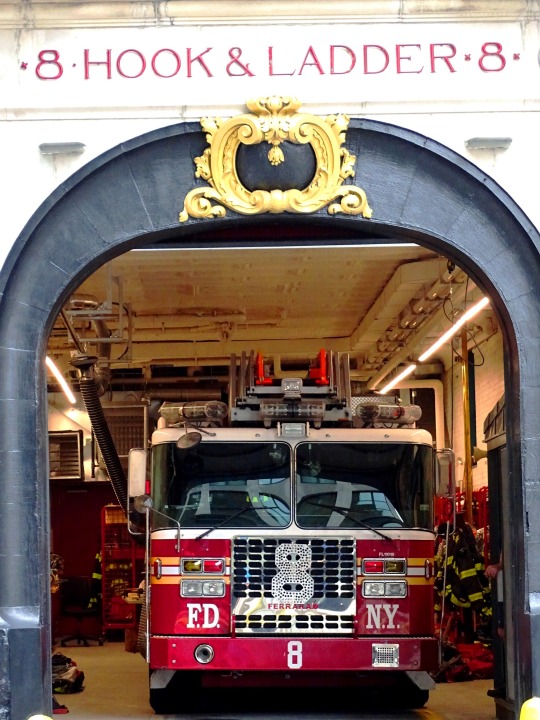


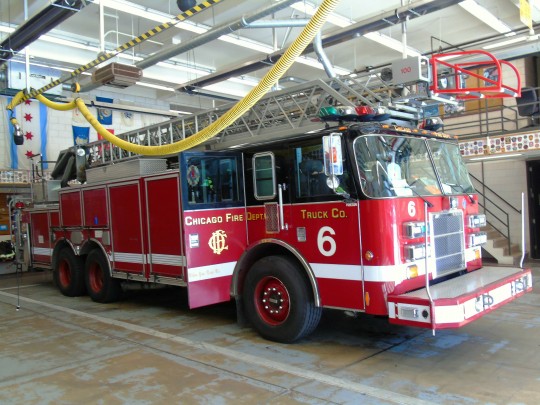
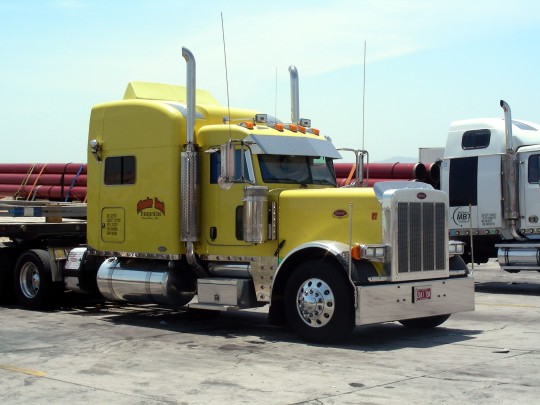
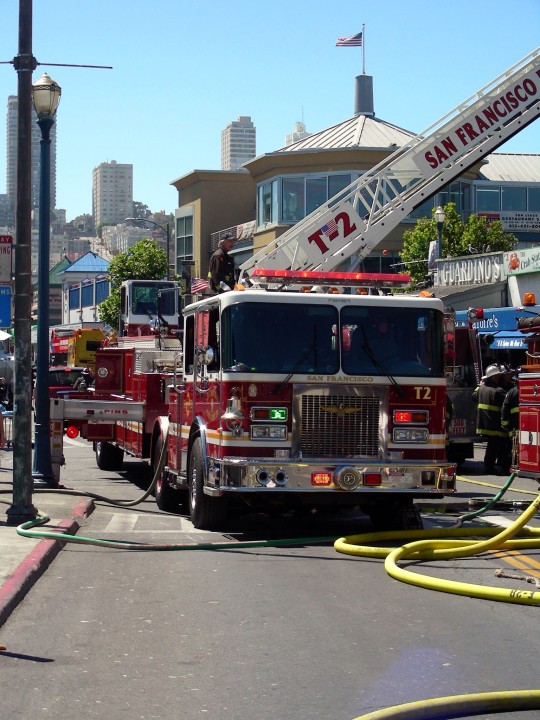
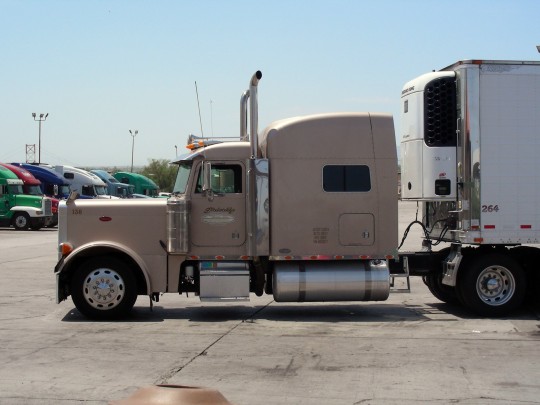
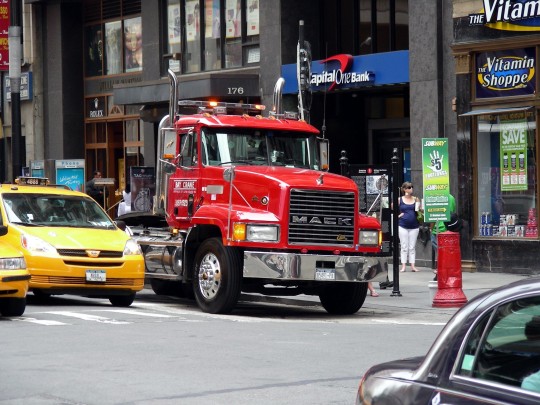
Truck Driver Day
Professional truck drivers are honored and celebrated today with Truck Driver Day. In the United States, a driver is considered to be a truck driver when their vehicle has a gross vehicle weight—the weight of the vehicle loaded—of at least 26,000 pounds. They must obtain a commercial driver's license (CDL) to drive a vehicle of this weight. Employers often require their drivers to take a safety training program, and some also require a high school degree or GED.
Truck drivers carry all kinds of freight—livestock, food, canned goods, liquids, packages, and vehicles—all across the United States and the world. They often have to load and unload their freight and must inspect their trucks before taking to the road. Truck drivers often ship products to stores, and some may have to undertake sales duties. Many truck drivers work long hours. Some may have daily local routes that keep them close to home, while others may have routes and schedules that often change, and many have to be away from home for an extended amount of time.
Some trucks were on the road in the United States prior to World War I. Trucks continued to be used and developed during the war, and by 1920 there were more than a million trucks on the roads of America. Trucking continued to expand over the following decade, on account of advancements such as the introduction of the diesel engine, improved rural roads, the introduction of power brakes and steering, and the standardization of truck and trailer sizes. In the 1930s, a number of trucking regulations were implemented, and the American Trucking Association was created. Trucking activity increased in the 1950s and '60s, in large part because of the creation of the Interstate Highway System. Regulations on the weight of trucks continued to be updated.
The heyday of the truck driver came in the 1960s and '70s. At the time, a wide swath of the public viewed truck drivers as modern-day cowboys or outlaws. The rise of "trucker culture" was signaled with the proliferation of trucker songs and films, the wearing of plaid shirts and trucker hats by the public, and the wide use of CB radios and CB slang. The romanticization of trucker culture subsided by the dawn of the 1980s.
Many truckers went on strike during the energy crises of 1973 and 1979, after the cost of fuel rose. The Motor Carrier Act of 1980 partially deregulated the industry. As a result, many new trucking companies were started. Trucker union membership also drastically declined, leading to lower pay. But the deregulation did reduce consumer costs, and it increased production and competition in the trucking industry. By the twenty-first century, trucking dominated the freight industry. In 2006, there were 26 million trucks on America's roads, which hauled about 70 percent of the country's freight. Truckers continue to play a prominent role in keeping the wheels of the economy turning, and for the hard work they put in to make this happen, they are honored and celebrated today!
How to Observe Truck Driver Day
Some ideas of ways the day could be spent include:
If you are a truck driver, get out there and drive! Or, take the day off. It should be up to you!
Wave to truckers or make a gesture like you are pulling a truck horn in an attempt to get them to honk their horns.
Thank a truck driver. Tell them thanks in person or make a social media post of thanks. Include the hashtag #TruckDriverDay.
Become a truck driver.
Listen to some truck driving songs such as "Convoy" and "Truck Drivin' Man."
Watch some truck driving films such as Smokey and the Bandit, Convoy, and Big Rig.
Talk on a CB radio.
Eat at a truck stop.
Attend or take part in the National Truck Driving Championships, which are held around the time as Truck Driver Day.
Read a book about trucking or truckers such as Trucking Country: The road to America's Wal-Mart Economy or The Long Haul: A Trucker's Tales of Life on the Road.
Explore the websites of organizations and companies related to the industry such as American Trucker, Truckers News, the Federal Motor Carrier Safety Administration, the American Trucking Associations, and the Women in Trucking Association.
Source
#Echo Canyon#Sherman Summit#Nevada#Utah#Wyoming#New York City#Hook & Ladder Company 8#fire truck#New York City Fire Department#USA#Chicago Fire Department#San Francisco Fire Department#street scene#cityscape#rest area#landscape#countryside#highway#original photography#car#engineering#tourist#Mack#Peterbilt#Truck Driver Day#Engine 13#12 August#TruckDriverDay
4 notes
·
View notes
Text
Best Institute for 1-Year PGDM for Executives

If you're eager to advance your career quickly, pursuing a 1-year PGDM for executives can be an excellent decision. Choosing the right institute is crucial for gaining valuable skills and knowledge that will help you thrive in today's job market. The best programs cater to busy professionals, offering practical lessons, experienced teachers, and strong connections to the industry. This prepares you to tackle real-world challenges and sets you on the path to leadership and success.
Top Institutes for 1-Year PGDM for Executives
1. Institute of Management Technology, Center of Distance Learning (IMT CDL) - Ghaziabad
IMT CDL has been a leading name in management education for over 30 years. It offers a variety of programs that adapt to the needs of both the Indian and global business environments. Approved by the All India Council for Technical Education (AICTE), IMT CDL provides recognized qualifications that meet high-quality standards.
Programs Offered:
PGDM (Executive) Business Analytics: Learn essential quantitative and analytical tools.
PGDM (Executive) Finance: Gain insights into broad aspects of financial management.
PGDM (Executive) Human Resource: Prepare for advanced roles in HR and training.
PGDM (Executive) Marketing:Build a solid foundation in marketing concepts.
PGDM (Executive) Operations: Focus on managing products, processes, and supply chains.
PGDM (Executive) Strategy: Develop and implement effective strategic plans.
Eligibility: Graduation with a minimum of 5 years of full-time work experience.
Fees: INR 1,10,000 (additional fees for exams, projects, and alumni registration).
Advantages of IMT CDL:
- Top-ranked distance learning institute.
- Over three decades of experience in management education.
- State-of-the-art learning infrastructure.
- Industry-relevant curriculum and highly experienced faculty.
- Flexible learning options, including live sessions and recorded lectures.
2. MIT School of Distance Education (MITSDE)
Established in 2008 as part of MAEER's MIT Pune, MITSDE promotes excellence in education and innovation. With a strong foundation in professional education, MITSDE offers a wide range of programs across multiple disciplines.
Programs Offered:
PGDM in Project Management
PGDM in Operations Management
PGDM in Information Technology
PGDM in Human Resource Management
PGDM in Finance Management
PGDM in Supply Chain Management
3. Management Development Institute (MDI) - Gurgaon
MDI Gurgaon offers a variety of programs for both management students and working professionals. Its flagship PGDM prepares students for leadership roles in a global business environment, with an updated curriculum that reflects current business trends.
Programs Offered:
PGDM in Business Analytics
PGDM in Human Resources
PGDM in International Business
IMT CDL – Ghaziabad
Pros:
Approved by AICTE.
Offers specializations in Business Analytics, Finance, HR, etc.
Distance learning mode, allowing flexibility for working professionals.
Shorter program duration of 15 months.
Affordable tuition fees at Rs. 110,000.
Cons:
Requires a bachelor’s degree with 5 years of experience, limiting eligibility.
Limited to a distance learning mode only.
MIT School of Distance Learning
Pros:
Approved by AICTE.
Flexible with online or distance learning options.
Specializations include Project Management, IT, HR, etc.
Affordable tuition fees at Rs. 90,000.
15-month program, suitable for working professionals.
Cons:
Requires at least 5 years of work experience.
Less prestigious compared to some institutions, lacking international accreditations.
Management Development Institute (MDI)
Pros:
Accredited by AACSB, USA, and AMBA, UK, offering strong international recognition.
Specializations in Business Analytics, HR, International Business.
Offers both online and full-time learning modes, providing flexibility.
Recognized and reputed institute in India.
Cons:
Higher tuition fees at Rs. 895,000.
Longer duration of 24 months.
Requires minimum 50% marks in prior education, with work experience preferred.
Conclusion:
When selecting the best institute for a 1-year PGDM for executives, consider key factors such as accreditation, curriculum relevance, faculty expertise, and networking opportunities. Institutes offering flexible learning formats and strong industry connections can greatly enhance your educational experience and career prospects. Ultimately, the right choice should align with your professional goals and provide the skills you need to advance in your career. Take the time to research and find an institution that fits your aspirations and learning style.
0 notes
Text
What to Expect When Attending a Commercial Truck Driving School
Truck driving is a profession that can be challenging and rewarding; however, to be successful, you need the correct training first. If you plan on enrolling yourself in a commercial driving school in Sacramento, then it's very important for you to know what the whole process of learning from start to finish should look like. A respectable truck driving school will ensure that as soon as you start out on your career, everything is simple and secure, and it will teach all the necessary skills so that one day soon after being given a truck driver's licence, it only takes time before becoming familiar with being an experienced professional driver.

The right balance of theoretical and practical training
When you enrol in a commercial driving school, you'll be given theoretical and practical training. During theoretical training, you are taught various rules, safety measures and laws regarding truck driving. In addition, during practical training, you will be allowed to drive a real truck at last. Sacramento's truck driving schools enable their students to excel at both of these major aspects studied together.
Special focus on safety rules
Safety is a core judgement of truck driving! To be safe in school, you will learn the skills necessary to be safe for yourself and others. Through teachers so professional and so patient, Sacramento's commercial driving school will help you understand from the get-go what all the pitfalls are out on the road. You will be given a thorough understanding of road rules and how to handle different situations you may encounter when driving.
Training with advanced equipment and vehicles
Some of Sacramento's best commercial driving schools train students using advanced equipment. With modern equipment like this, you can experience real-time driving and also get familiar with the latest technology. Not only will your driving ability improve, but you'll also be prepared for any challenges that are thrown at you in the real world.
Experienced and Professional Instructors
A good truck driving school is one in which the instructors are not only qualified to teach you but can also influence and guide you. Sacramento's commercial driving schools will provide you with skilled instructors who will not only help with the technical aspects of driving but impart confidence as well.
Employment Opportunities and Career Guidance
An important part of the picture is that many commercial driving schools provide employment placement services so their students can find jobs.
Conclusion
Enrolling at a commercial driving school is the start of your truck driving career in Sacramento, and this may be vital. Here you get theoretical and practical training, knowledge of safety rules from professionals, and cross-country equipment training with top-of-the-line machinery. Find a school that will take good care of you and meet your requirements.
Ready to hit the open road as a professional truck driver? Dave Truck Driving School in West Sacramento is your fast track to success. Our personalized 1-on-1 CDL training ensures you get the attention you deserve. Learn on top-of-the-line equipment and gain the skills employers demand. Don't settle for less – choose the leading truck driving school in the region. Your new career is just around the corner!
#Truck Driving School West Sacramento#truck driving lessons#CDL training Sacramento#commercial driving license in West Sacramento#truck driving courses in West Sacramento#Affordable truck driving school#best truck driving school near me#truck driving school costs#CDL school
0 notes